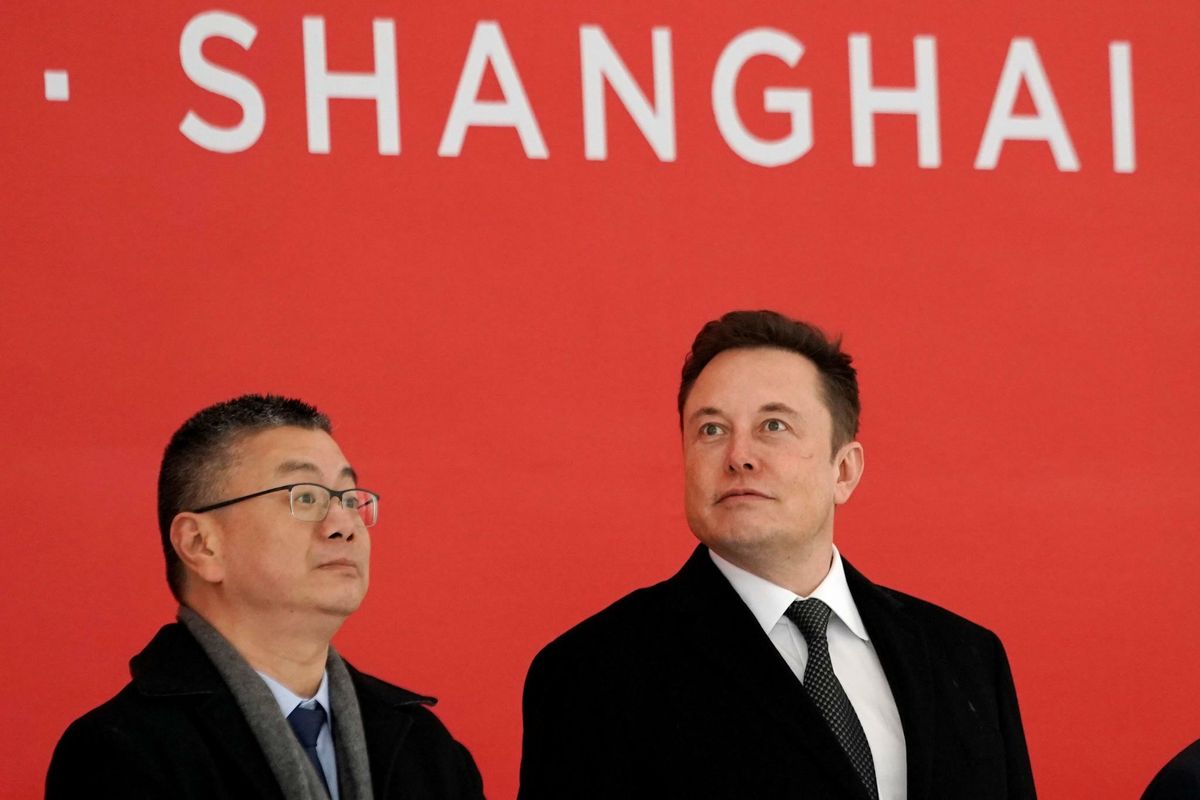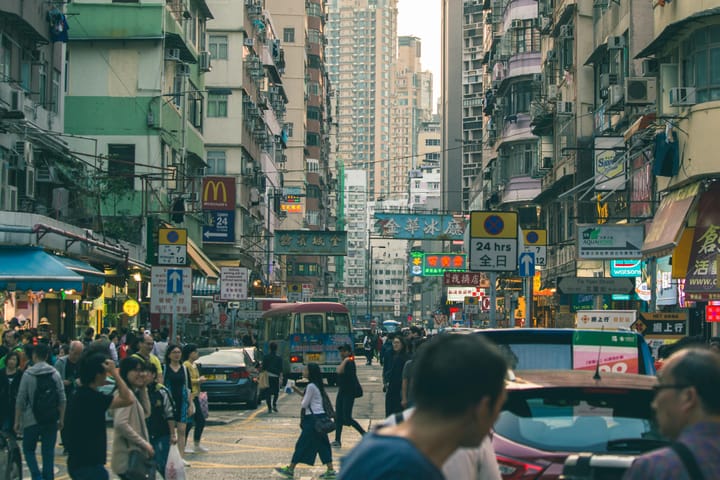What does Elon Musk’s Tesla want in China?

A few minutes every morning is all you need.
Stay up to date on the world's Headlines and Human Stories. It's fun, it's factual, it's fluff-free.
The escalating trade war between the United States and China has made economic opportunities and future ties between the two nations increasingly uncertain.
Nevertheless, Tesla, Inc., the electric vehicle manufacturer owned by billionaire entrepreneur Elon Musk, has no plans to forgo its objectives in China.
China recently accounted for a quarter of Tesla’s total revenue and the continued expansion of a Shanghai “Gigafactory” and comments made by Musk himself suggest that despite declining relations between the US and China, the latter will continue to factor greatly into the California-based company’s future and fortunes.
Tesla, then, bucks what has become a trend of American companies diverting production and dollars away from China.
The Trump administration has taken a hard line against certain Chinese companies and imposed sanctions on individuals and corporations for an array of alleged abuses and malpractices.
For Musk, the benefits provided by the Chinese market outweigh the potential risks in doing business in the country. The billionaire is making a bet that by expanding Tesla’s operations in China, the company’s future will be even brighter.
Decoupling
Tesla’s growing interest and operations in China comes as the US has moved down a path of economic decoupling in recent years.
The Trump administration has made clear that past trade agreements with China have been unfavorable toward the US and Treasury Secretary Steven Mnuchin has threatened further “decoupling” from China if US companies could not compete in the country.
The hostile environment for business that has arisen in the last few years, characterized by disputes as varied as data usage on social media apps to human rights abuses and accusations of genocide, has seen some US-based companies moving parts of their operations out of China.
Apple, for instance, has long maintained a major presence on the Chinese mainland, relying on the China-based factories of Taiwanese manufacturer Foxconn for the production of much of its hardware.
Yet Apple has recently begun to intensify efforts to shift production to India, both as a means to enlarge its share of the mobile phone market in that country and to diversify its supply chain and revenues so as to avoid any future economic fallout between the US and China.
Analysis from Rhodium Group, LLC, an independent research group, has shown that foreign direct investment in China continued to trend downward in 2019, hitting some US$5 billion, the lowest level in a decade. Foreign direct investment in China is likely to be even lower in 2020 as a result of both the coronavirus pandemic and continued disputes between the country and the US.
Tesla in China
Despite the hostile atmosphere between the US and China, which has prevailed for much of President Donald Trump’s time in office, the electric car manufacturer Tesla has staked a large bet on its future in the country.
In late 2019, Tesla’s “Gigafactory” in Shanghai began production of its Model 3 cars in the country for the first time. The Gigafactory Shanghai represents a multibillion dollar effort by Tesla to ramp up production within China – rather than export into the country – and is evidence of Tesla and Musk’s confidence in the future of the Chinese electric car market.
Where production out of Tesla’s Fremont, California plant was forced to shut down as a result of the pandemic, which prompted a dispute between Musk and local California authorities, the Shanghai Gigafactory was only closed for a brief period before resuming production in late-February and March.
Gigafactory Shanghai reportedly produced 3,000 cars a week following its brief shutdown, with Tao Lin, the vice president of Tesla China, stating that Tesla aimed to increase production by more than 30% by June, which would see the plant hitting its 150,000 cars a year target by the end of 2020.
Tesla’s large investment in China appears to be paying off. In the second quarter this year, Tesla’s revenue climbed by over 100% in the country. The company is reportedly raking in US$1.4 billion in revenue in China alone.
Based on those second-quarter figures, China is now accounting for at least 25% of Tesla’s worldwide revenue.
The initial success of Tesla’s Gigafactory has already prompted rumors that Tesla is building another factory in China, with social media proclaiming that Tesla planned to build a new factory near the city of Chongqing. The rumors sent Tesla’s stock up 7% in premarket trading back in July.
Tesla’s incentive
Tesla’s investment in China comes as a result of government incentives, an attractive Chinese market and Tesla’s existing appeal to Chinese consumers.
China is the world’s largest market for electric and hybrid vehicles. The market share of electric vehicles as a percentage of the total car market in China has steadily increased over the last decade, jumping from a tiny 0.06% in 2012 to nearly 5% of the total market in 2019.
This increase has been encouraged by the Chinese government itself. The country’s “Made in China 2025” plan, unveiled in 2015, had electric vehicles as one of 10 areas that the country hoped to become self-sufficient in.
Tesla’s position in China was a respectable one even before the opening of its Gigafactory in Shanghai. Tesla’s electric cars – specifically the Model 3 – have consistently outperformed its Chinese competitors, all of which are either more expensive or possess batteries that don’t allow its cars to go as great a distance.
In 2019, Tesla saw its sales in China increase by 161% over the previous year. That was before the construction of the company’s Shanghai-based Gigafactory was completed and production had begun in-country.
Tesla’s decision to invest and build a future in China, however, has not come without significant financial encouragement on the part of the Chinese government. The government assisted the construction of Tesla’s Gigafactory Shanghai by helping Tesla secure US$1.6 billion in funding from state-owned banks.
The Chinese government has even gone as far as to exempt Tesla’s Model 3 owners in the country from having to pay the standard 10% sales tax and has provided a US$3,560 subsidy on each car.
This government assistance has been significant for Tesla. In June alone, Tesla delivered just under 15,000 Model 3 cars – a significant 23% of the electric vehicle market in China – while Tesla’s nearest competitor sold a mere 4,000 cars.
Tesla’s China-based production has also allowed it to escape tariffs on imports into the country, which drive up prices for products. For instance, the Model 3 is now sold for around CN¥270,000 (US$39,000) compared to the more than CN¥350,000 (US$50,000) the car was initially sold for when it was first introduced in the country.
In the absence of a strong domestic competitor, China’s government has allowed and encouraged Tesla’s investment in order for the country to meet its planned target for electric vehicles and Tesla has proved a willing recipient of this support.
Tesla’s Elon Musk has even made comments stating that “China rocks” whereas the US, Tesla’s biggest market, is filled with “increasingly much more complacency and entitlement.”
But Tesla’s growing interest in China has not come without significant government aid. This, in large part, is what has fueled Tesla and Musk’s interest in the country while other corporations flee in the wake of the disputes between China and the US.
But where other companies are looking to further divest from China, Tesla is rushing to embrace the future opportunities offered by the Middle Kingdom.
Have a tip or story? Get in touch with our reporters at tips@themilsource.com




Comments ()